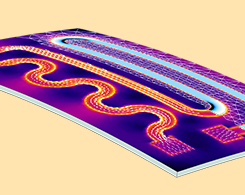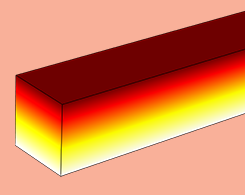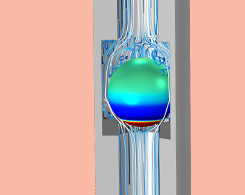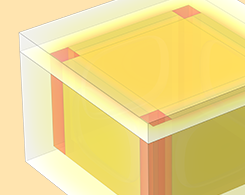Fluid & Heat Blog Posts

Simulation Applications Enable Digitalization at ABB Traction Motors
Here’s a real-world example of optimizing R&D processes with COMSOL Server™: At ABB Traction Motors, engineers use simulation applications to analyze CFD and heat in electric motor designs.

Designing Heating Circuits with Multiphysics Simulation
The electronic message boards you see on the highway contain heating circuits. Their design is a truly multiphysics problem involving heat transfer, structural mechanics, and electromagnetics.

Improving Fire Protection for Structures via Building Physics Simulation
“I didn’t know there was a fire drill scheduled for today,” you say to a colleague. “There isn’t,” they respond. Then you smell smoke. Continue the story in this blog post on building physics.

Keynote Video: Optimizing Cable Systems via Simulation
The length of cable for a mode of transportation depends on the amount of passengers, so a car uses ~5 km of cable and a cruise ship uses ~5000 km. Learn more about cable system design here.

Keynote Video: EPFL Uses Simulation to Design a Hyperloop Pod
The EPFLoop team used multiphysics simulation to design the aeroshell, pressure vessel, and braking system of their hyperloop pod for the SpaceX 2018 competition. Get an inside look here.

Simulating Fluid-Structure Interaction in a Ball Check Valve
Simulate FSI in a ball check valve to find the flow rate, fluid pressure, and fluid velocity. The COMSOL® software includes a predefined multiphysics coupling that makes it simple.

2 Mesh Adaptation Methods: Enabling More Efficient Computations
Why adapt your mesh? For one thing, it helps you solve your computational problems more efficiently. Here, we show you 2 methods for adapting your mesh in COMSOL Multiphysics®.

Maintaining Cold Temperatures in an Isothermal Box with Simulation
Heat transfer modeling is more accurate when you can input historical climate data from ASHRAE, such as in this example of an isothermal box designed to transport perishable items and medicine.
